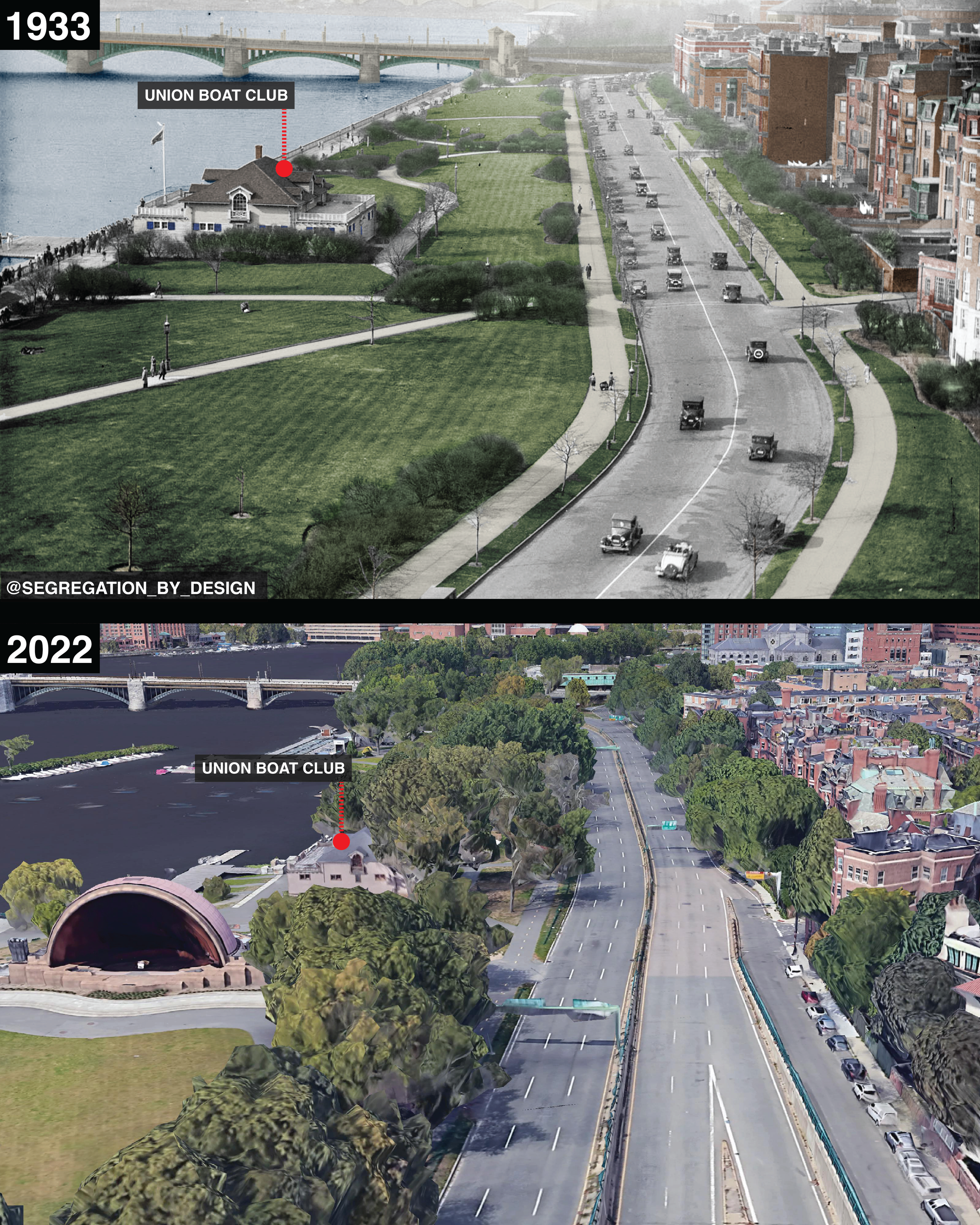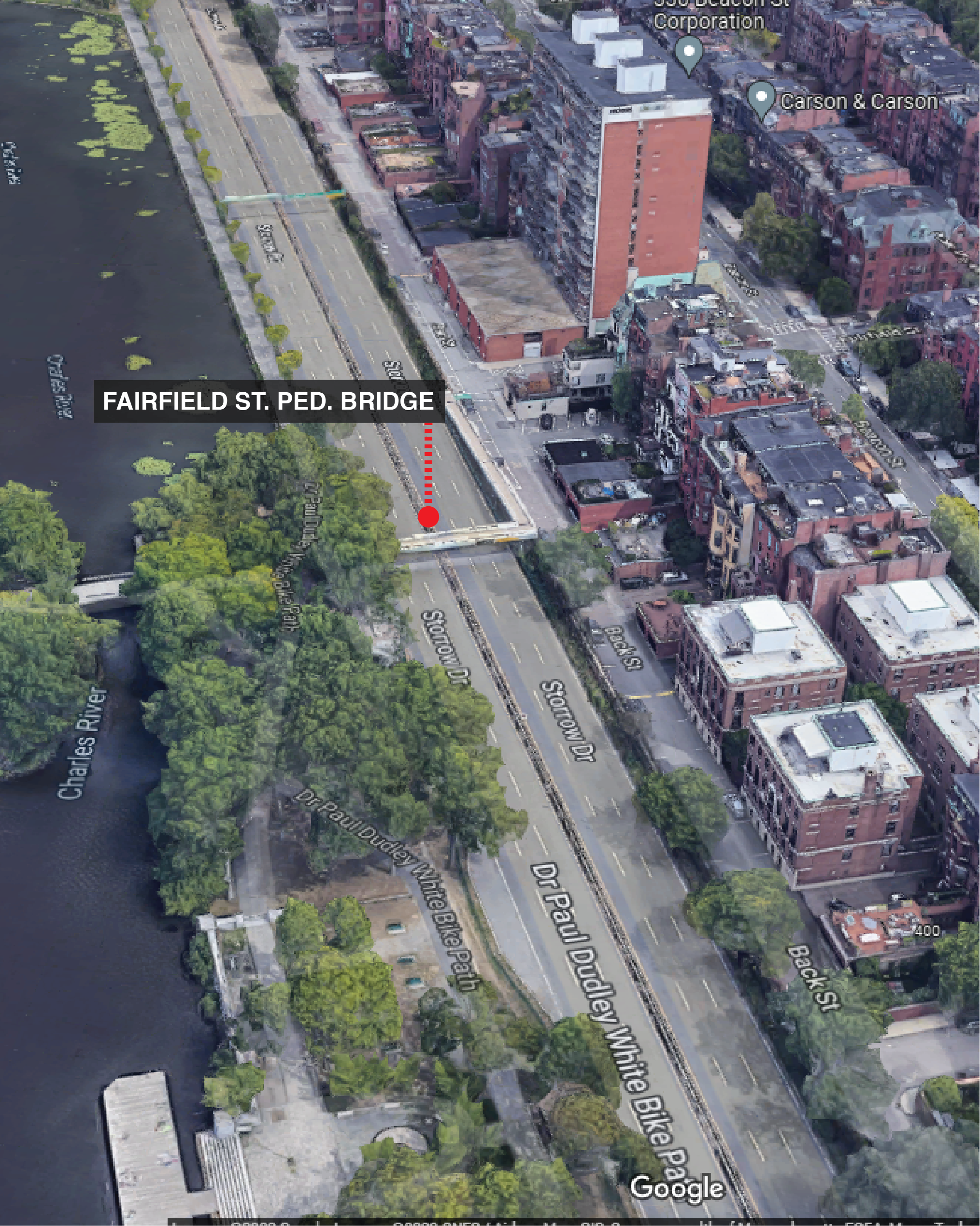BOSTON: STORROW DRIVE
“It is increasingly clear to me that white flight was not a mystical process for which we have no real explanation or understanding. White flight was the policy of our federal, state, and local government. That policy held that Americans should enjoy easy access to the cities via the automobile and live in suburbs without black people, who by their very nature degraded property and humanity.”
-Ta-Nehisi Coates, @theatlantic
It was this policy—rooted in redlining, that white Americans should have easy access to city centers via the automobile—that led downtowns to often be literally re-labeled “central parking districts” on planning documents. It also encouraged planners to plow highways through existing public space (low-hanging fruit, as the land was already public property) in order to reach those suburbs. Spurred on by the 1956 Federal Highway Act (which provided a whopping 90% federal dollar match for any road which was upgraded to federal freeway standards), planners gouged freeways through cities across the nation.
In this case it was the Charles River Esplanade that was paved, physically dividing one of America’s finest public spaces from its adjoining neighborhoods, including the Back Bay and the racially diverse West End and Beacon Hill (diverse at the time). While the city used additional fill in the Charles River to “replace” parkland that was lost due to road widening, accessing the park became immensely more difficult. What had once been three miles of waterfront public park directly interfacing with the city at every single block was reduced to a grand total 8 pedestrian overpasses (one pictured in third image).
TYVM to @streetscapecurator for the “after” photo, taken from the Fielder ped bridge last weekend.


